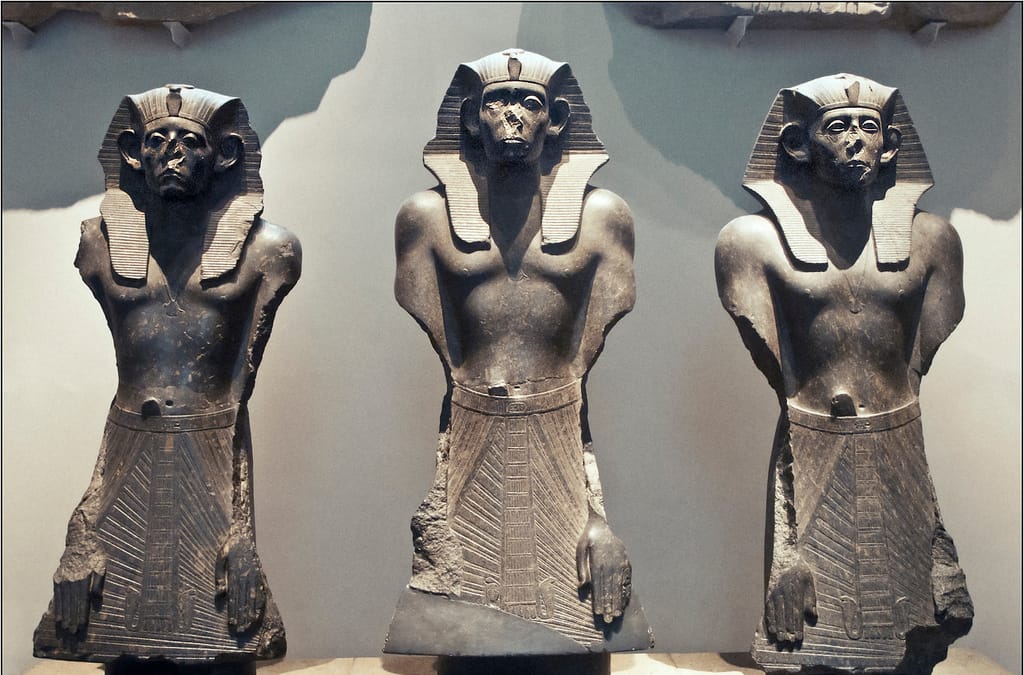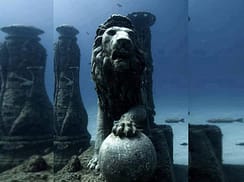Why are Noses Missing from so Many Egyptian Statues?
– this is one of the most common questions you will hear within art history’s circles.
Is it just a coincidence, or could it possibly be a conspiracy?
Natural Erosion Has Played a Role
Several archaeologists have suggested erosion could be one of the main reasons this happens to many ancient statues. Harsh winds, shifting mud and sand dunes, the flowing of water, and thousands of years of feet and hands pitter-pattering over relatively delicate materials such as marble and stone will most likely have a pretty damaging effect. Many of these ancient statues have been exposed to these elements for a very long time, while others have been buried under tons of mud and sand for centuries, it’s usually the extremities, such as arms, legs and noses that get damaged the most and eventually disappear.
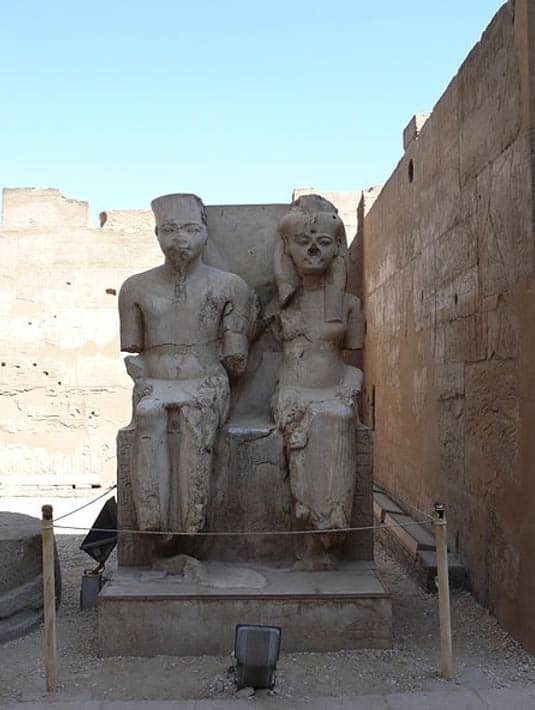
Statues of a young Tutankhamun and his consort Ankesenamun outside at Luxor Temple, Luxor, Egypt. (Ad Meskens/CC BY SA 3.0)
Human Intervention is Definitely Another Major Factor
Vandalism could be another major factor as to why this phenomenon appears so frequently. A recent example, not in Egypt, is the statue of the famous philosopher Aristotle, which is welcoming visitors at the entrance of the ancient Assos site, in Turkey. The statue of Aristotle, known as the founder of the first philosophy school in history, was erected in 2009 by the Culture Ministry of Turkey at the entrance to the ancient Assos site in the Ayvacık district, but in 2015 it was vandalized after its right arm was removed, while severe distortion was noted on the statue’s face as well.
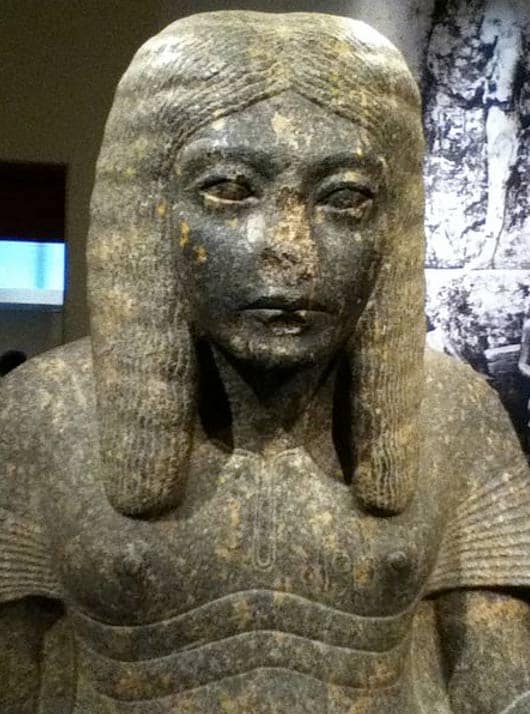
Who or what damaged this statue of the Ancient Egyptian pharaoh Haremheb as a scribe? Did vandals take his nose? (Aryeh Shershow/CC BY SA 3.0)
It has also been noted before that several archaeologists during the late 19th and early 20th century, lacking the finer instruments and procedures we have today and in a hurry to be the first to discover the “next big thing”, were responsible for some of the most hideous damages ever committed against classical sculpture.
Of course, religion has also played a huge part, even though extremist Muslims aren’t the only ones who have been caught in the act as many people falsely believe today. Christians, Jews, and many other known religions have also taken part in the shameful act of vandalism throughout the centuries and are responsible for the de-nosing and dismembering of many cultural and historical treasures.
Could it be Racism?
According to some scholars, there was a deliberate attempt by early Egyptologists to deny and hide that Ancient Egypt was an African culture. According to the written account of Vivant Denon, a French artist, writer and archaeologist who etched the image of the Sphinx of Giza around 1798, the facial features of the famous monument appeared to be of African origin.
…Though its proportions are colossal, the outline is pure and graceful; the expression of the head is mild, gracious, and tranquil; the character is African, but the mouth, and lips of which are thick, has a softness and delicacy of execution truly admirable; it seems real life and flesh. Art must have been at a high pitch when this monument was executed; for, if the head wants what is called style, that is the say, the straight and bold lines which give expression to the figures under which the Greeks have designated their deities, yet sufficient justice has been rendered to the fine simplicity and character of nature which is displayed in this figure.
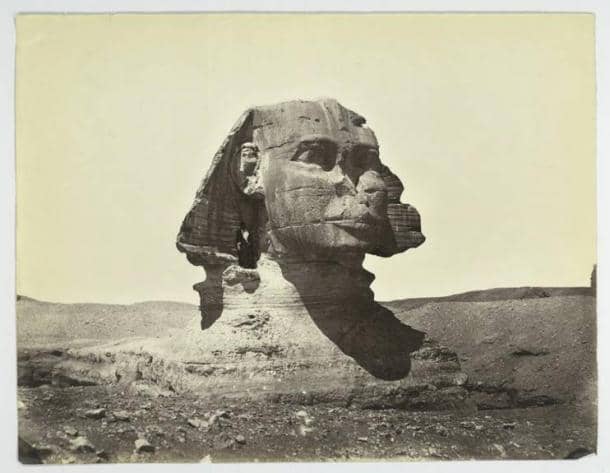
The Great Sphinx in 1867. Note its unrestored condition, still partially buried body, and man standing beneath its ear. (Public Domain)
However, this theory fails to explain why so many ancient Greek and Roman statues are de-nosed and dismembered as well. Noses on the vast majority of ancient Greek and Roman stone sculptures are missing too. While some of these have inevitably broken off accidentally, it’s pretty evident that an overwhelming number of them have been deliberately targeted. Since it’s historically, archaeologically and scientifically proven that the ancient Greeks and Romans were of European (Caucasian) origin, in this case racism wasn’t likely to have been a reason for the intentional de-nosing of those statues.
Humiliation
It has been recorded that later Egyptian dynasties would often deface statues of past monarchs in order to erase or diminish their legacy. In these cases the removal of the nose would be accompanied by other, more extensive facial disfigurements, as well as the destruction of inscriptions and symbols of office.
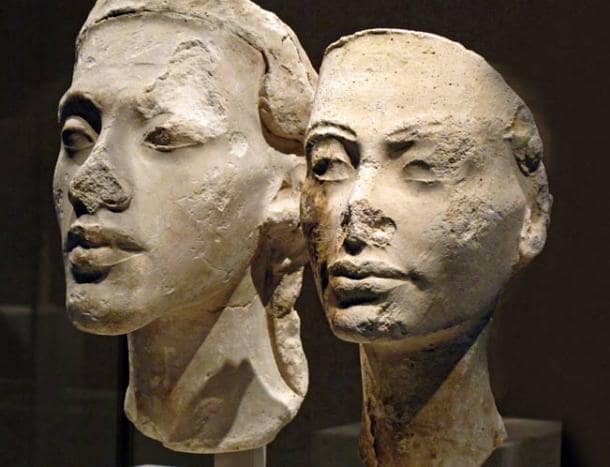
Busts of Akhenaten and Nefertiti. (kairoinfo4u/CC BY NC SA 2.0)
In conclusion, the suggestion that the statues had their noses removed specifically to “hide” the race of the individuals they depicted is definitely not a theory to fully dismiss, but it’s only a theory for now, with no solid archaeological proof and evidence verifying it. So, for one to answer with confidence the question why so many Egyptian statues are missing their noses, they should be able to explain with certainty why the same happened with so many statues of Greek, Persian, and Roman origin as well.
By: Theodoros Karasavvas / Source: AncientOrigins
Top image: Sad Ancient Egyptian statues with sticky-out ears and broken noses – flickr.com
References
Bradley, M. (2015) Effaced: the missing noses of classical antiquity. http://blogs.nottingham.ac.uk/argonautsandemperors/2015/10/23/effaced-the-missing-noses-of-classical-antiquity/
Kemet Expert (2016). Why are the noses missing from Egyptian statues? http://kemetexpert.com/why_are_the_noses_missing_from_egyptian_statues/
SAFItech (n.d). Why No Noses On Statues? http://www.eastart.net/no-noses-statues/
